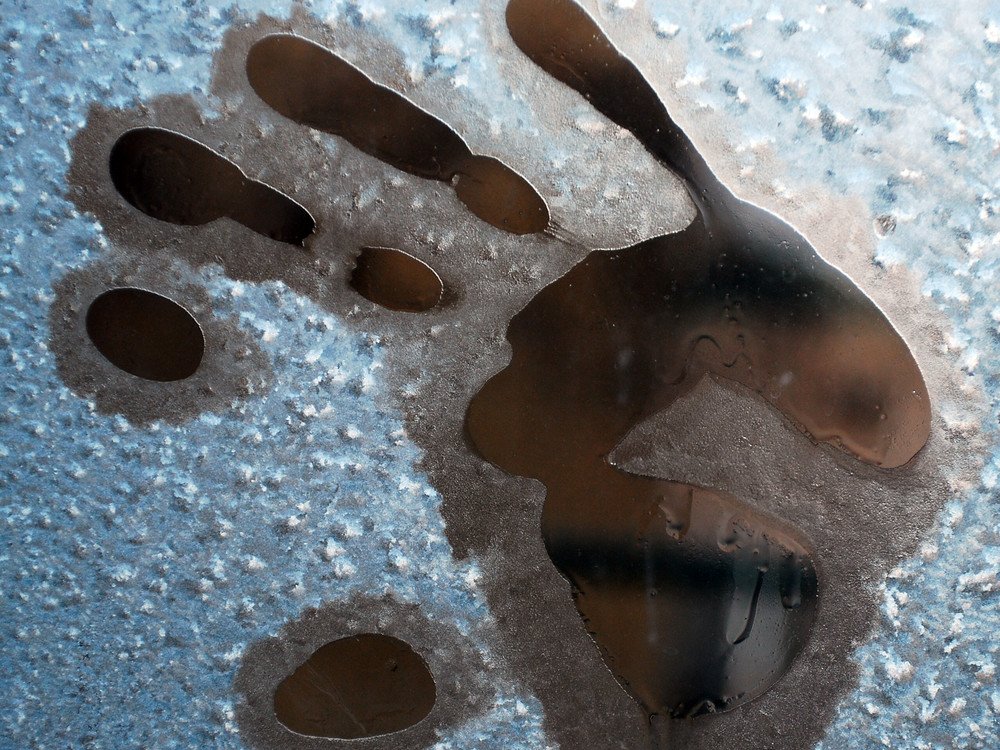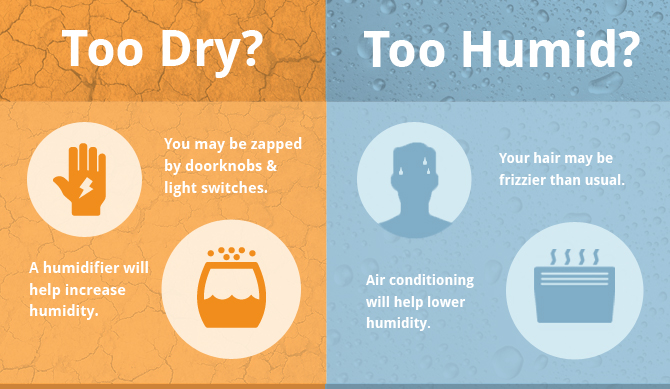Table Of Content

If your house is eligible, you can get a home upgrade plan from experts with years of experience in climate control and home air circulation. High humidity in a house can be caused by many things, but the biggest reason is poor ventilation—in other words, air isn’t being circulated properly, which causes the air in your house to become stagnant and humid. 81% of people say their comfort at home improves after installing renewable-based heating systems, like heat pumps. If your air conditioner is old or outdated, it’s likely struggling to keep your home feeling cool and fresh. High humidity in a house is really uncomfortable—and can be unhealthy, too.
Main Causes of High Indoor Humidity
Radiant heat can be installed beneath flooring and behind wall panels, but it’s not a DIY job. On the other hand, inadequate humidity in the house can also be a problem. Low humidity can result in dry skin, sinus issues, and increased static electricity. Excessively dry air, at 5 percent humidity or less, can also cause wallpaper to peel away and wood furniture and building materials to shrink, which can lead to warping or cracking. No matter your ultimate choice, it’s wise to pay the price of installing a dependable dehumidifier to consistently keep your humidity levels in check.
How Can You Tell If You Have Excessive Humidity in Your Home?
Building pressurization must overcome any depressurization from stack effect, wind effect, and fan effect (Figure 4). The design team must consider how exhaust air systems will affect space pressures. In the graph for Columbus, Ohio (Figure 2C), the latent load from outside air is consistently less than the sensible load. A humid climate is defined as one where the average monthly latent load of outside air meets or exceeds the average monthly sensible load for any month during the cooling season.
AC not blowing cold air? Here’s how to fix it
“These can be installed to either discharge directly into a room or to rely on an air handler blower to push the humidified air through the home,” she says. Since it has its own heating element, this model doesn’t need to rely on heat from a furnace or hot water connection. Unfortunately, all food contains water and when you’re cooking that food, the water is evaporated and… you guessed it, added into the air as additional humidity. The very definition of humidity is actually a measurement and stands to inform us about how much water is inside the air.

Another solution for how to lower humidity is to keep the interior doors open. As with leaving windows open, this will allow for better airflow throughout the house. When rooms are closed off, the air can’t move around as much, which can increase humidity levels. Folks with a very humid basement or laundry room should prop the door open so more less-humid air from the rest of the home can cycle through. If you live in a subtropical region, sometimes it’s hard to believe that humidity is beneficial in moderation. Meanwhile, people in dry climates often buy whole-house humidifiers to avoid breathing overly dry, irritating air.
How low humidity damages your home
The reddest areas are predicted to have the most unusually warm wet bulb temperatures — a measure of the combined effects of humidity and temperature. The red boxes outline regions that were analyzed in more detail. The second method of dehumidification is through the use of a desiccant that attracts the moisture in the air to its surface by introducing a low vapor pressure at the desiccant surface. The vapor pressure of the moisture in the air is higher, so moisture travels from the air to the desiccant.
If your family’s okay with sacrificing a bit of privacy, try keeping the interior doors in your house open to encourage better air circulation. Rugs can absorb a lot of moisture, and if yours smell like mold, mildew or fungus, that’s a pretty sure sign that there are moisture issues going on. If your rugs seem to be holding moisture, have them cleaned or toss ‘em all together. You might have charcoal briquettes lying around for barbecuing purposes, but they can also help to dehumidify your home.
Cover Pots While Cooking
The following table shows the ideal level of humidity to achieve in your home based on specific circumstances. Did you know that water can evaporate from the exposed soil of your houseplants? To reduce humidity, you may want to move them outside, even just temporarily.
"The gusty, cool wind that kicks in during a thunderstorm is actually cold air coming down from higher up in the atmosphere, cooling down the surface," Boos said. "When El Niño happens, the upper atmosphere gets warmer, which means that these downdrafts won't be as cold. So your surface overall will move to a higher heat and humidity content." One of the best dehumidification strategies is a combination of desiccant and cooling systems, particularly for 100 percent outside air streams such as makeup air systems. Since air exits a cooling-based system at saturation, it only moves to a lower RH once it mixes with the room air and heat is added to it. The desiccant, on the other hand, enters the space with very low RH, and its RH increases to the room's RH level once the two air streams reach equilibrium.
For that reason, humidity becomes trapped, causing a sticky feel in the air. Unfortunately, this can breed mold and mildew growth and lead to uncomfortable skin and allergy symptoms. Ahead, discover the ideal humidity level for the inside of your house and several expert-recommended ways to adjust your home's moisture levels. If you aim to maintain ideal indoor humidity between 30 and 50% RH, the average home will require some help. Modern home construction is becoming increasingly tight, making excess humidity a factor even in my clients’ harsh desert climate.
To lower humidity in the house and resolve this issue, try adding weatherstripping along the windows and doors to seal up any leaks and eliminate drafts. Adding a door sweep to the exterior doors will also help prevent cold air from escaping and humid air from getting in. The most common causes of high humidity in a home are poor ventilation and malfunctioning HVAC systems. Wet areas, such as bathrooms, require adequate aeration to avoid moisture buildup.
9 Must-Know Tips for Houseplant Care in the Winter - Better Homes & Gardens
9 Must-Know Tips for Houseplant Care in the Winter.
Posted: Tue, 20 Feb 2024 08:00:00 GMT [source]
In hot, humid climates, outside air can carry a large moisture load. If outside air is drawn into the building envelope by negative pressure inside the building, it will travel through the wall system and into the interior space. Because air flow will always follow the path of least resistance, air can be carried down interior walls of a space if the walls are connected to the exterior envelope. As the air flows through the wall system and moves past the cool interior wallboard, the moisture in the air condenses and is deposited in the wall cavity, thus damaging the wallboard. The potential for moisture accumulation not only increases with decreasing interior temperatures but also increases with increased negative pressures (Figure 3). High humidity in your home can be an uncomfortable and unhealthy situation.
Four, or bright magenta, signals the heat could hurt nearly anyone. That threshold can be crossed when temperatures go above historical highs, or when extreme conditions stretch for several days in a row. People rest at a cooling station in Portland, Oregon during the deadly Northwest heat dome of 2021.
A sudden descent into cooler La Niña conditions in the Eastern Pacific — essentially the reverse of El Niño — could also offset temperature and humidity increases. But barring such events, the prediction could help countries prepare for a potentially deadly combination of high heat and high humidity. In warm-humid environments like the tropics, wet bulb temperatures above 30 C could lead to irreversible heat stress. If you have a crawl space, moisture from the soil might be entering your home, increasing the humidity level at large. You can install a vapor barrier over the soil to prevent humidity from entering your living space.
This volume of water won’t just disappear and you’ll see it come through when the house suddenly feels stuffier. Health issues aside, rising damp can also damage the structure of your home too. Yes, you can change the environment inside your home, but you can’t change the things you can’t control. Some regions are hotter than others, and so, more humid, especially in summer. Air quality in your house is directly affected by how good your ventilation is.

No comments:
Post a Comment